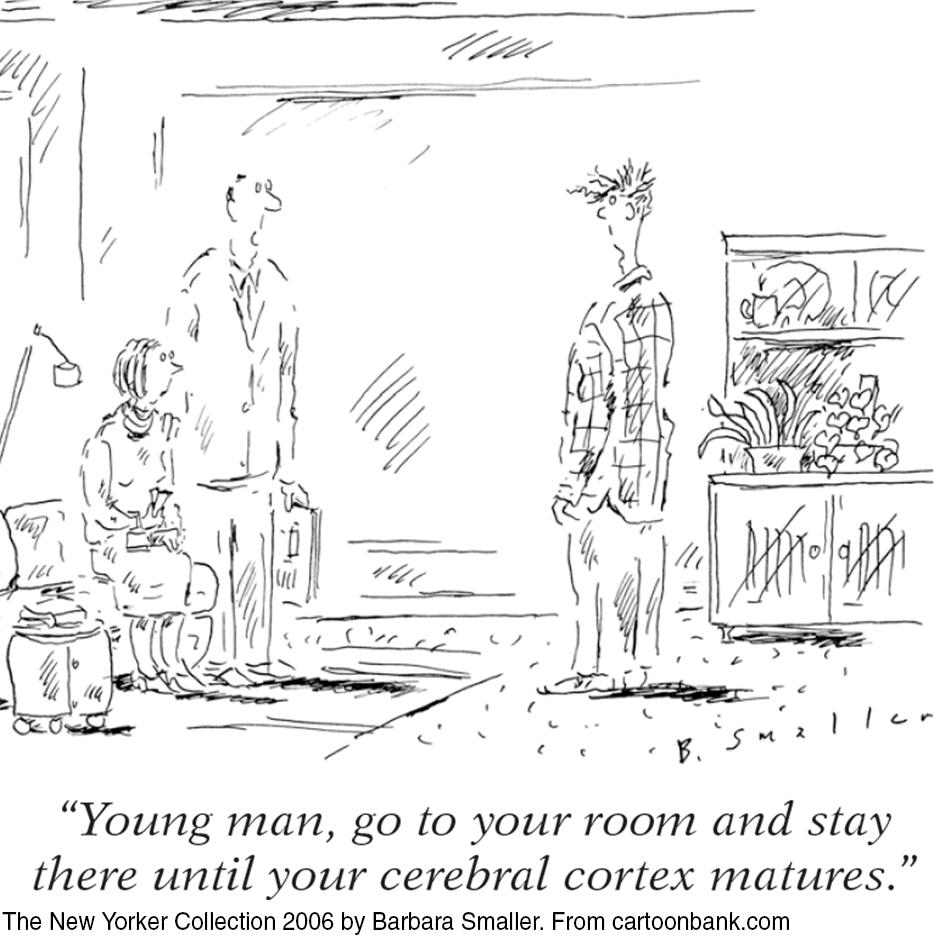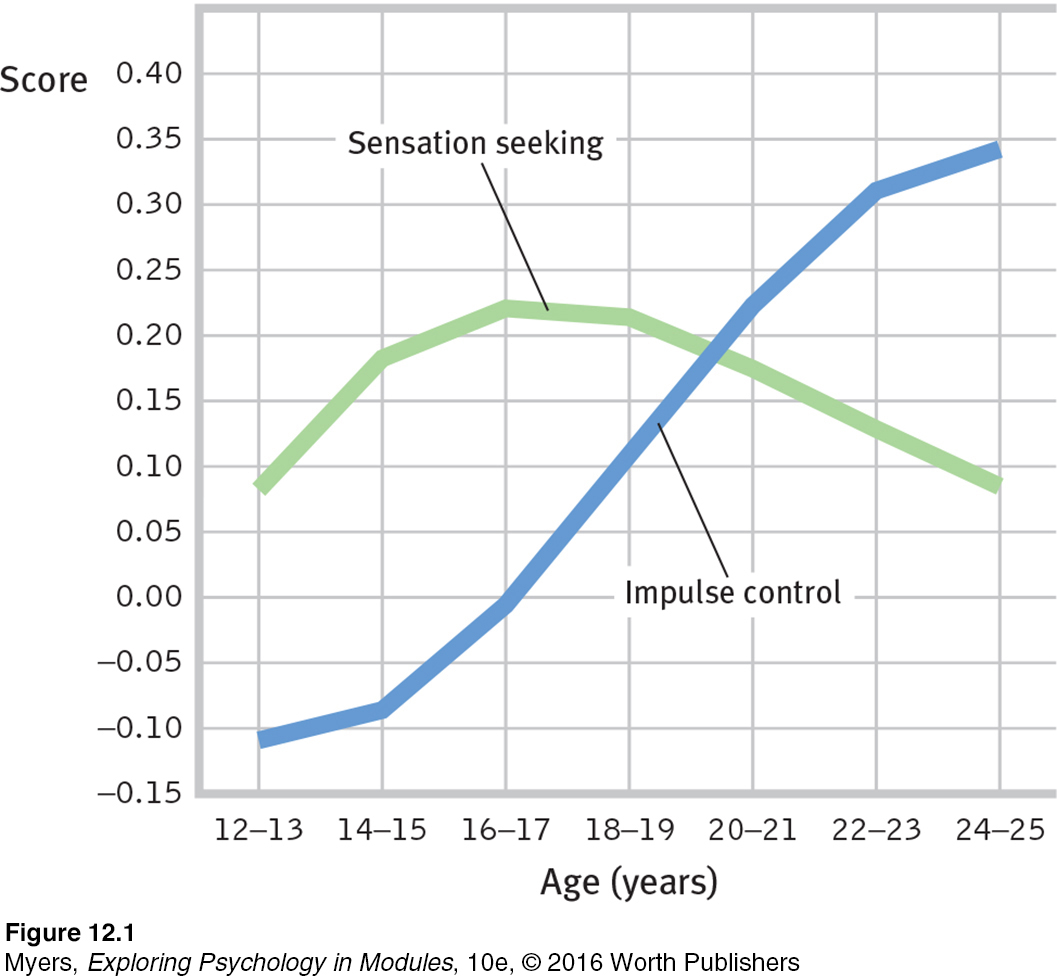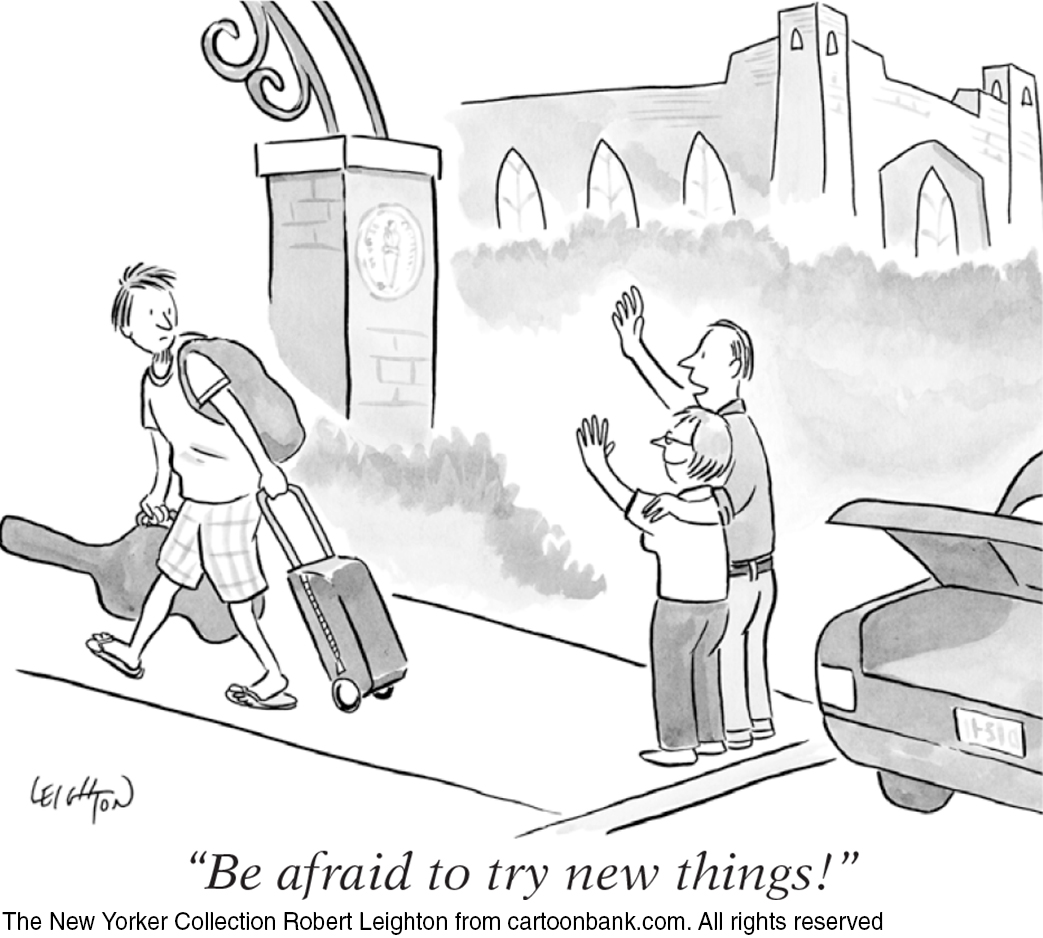12.1 Physical Development
puberty the period of sexual maturation, during which a person becomes capable of reproducing.
Adolescence begins with puberty, the time when we mature sexually. Puberty follows a surge of hormones, which may intensify moods and which trigger a series of bodily changes outlined in the Sex, Gender and Sexuality modules.
Early versus late maturing. Just as in the earlier life stages, the sequence of physical changes in puberty (for example, breast buds and visible pubic hair before menarche—the first menstrual period) is far more predictable than their timing. Some girls start their growth spurt at 9, some boys as late as age 16. Though such variations have little effect on height at maturity, they may have psychological consequences: It is not only when we mature that counts, but how people react to our physical development.
Page 148
For boys, early maturation has mixed effects. Boys who are stronger and more athletic during their early teen years tend to be more popular, self-assured, and independent, though also more at risk for alcohol use, delinquency, and premature sexual activity (Conley & Rudolph, 2009; Copeland et al., 2010; Lynne et al., 2007). For girls, early maturation can be a challenge (Mendle et al., 2007). If a young girl’s body and hormone-fed feelings are out of sync with her emotional maturity and her friends’ physical development and experiences, she may begin associating with older adolescents or may suffer teasing or sexual harassment (Ge & Natsuaki, 2009). She may also be somewhat more vulnerable to an anxiety disorder (Weingarden & Renshaw, 2012).
The teenage brain. An adolescent’s brain is also a work in progress. Until puberty, brain cells increase their connections, like trees growing more roots and branches. Then, during adolescence, comes a selective pruning of unused neurons and connections (Blakemore, 2008). What we don’t use, we lose.
Compared with adults, teens listen more to music and prefer more intense music (Bonneville-Roussy et al., 2013).
As teens mature, their frontal lobes also continue to develop. The growth of myelin, the fatty tissue that forms around axons and speeds neurotransmission, enables better communication with other brain regions (Kuhn, 2006; Silveri et al., 2006). These developments bring improved judgment, impulse control, and long-term planning.

Maturation of the frontal lobes nevertheless lags behind that of the emotional limbic system. Puberty’s hormonal surge and limbic system development help explain teens’ occasional impulsiveness, risky behaviors, and emotional storms—slamming doors and turning up the music (Casey et al., 2008, 2013). No wonder younger teens (whose unfinished frontal lobes aren’t yet fully equipped for making long-term plans and curbing impulses) may succumb to the tobacco corporations, which most adult smokers could tell them they will later regret. Teens actually don’t underestimate the risks of smoking—or fast driving or unprotected sex. They just, when reasoning from their gut, weigh the immediate benefits more heavily (Reyna & Farley, 2006; Steinberg, 2007, 2010). Teens find rewards more exciting than adults do. So they seek thrills and rewards, without a fully developed brake pedal controlling their impulses (FIGURE 12.1).

Figure 4.16: FIGURE 12.1 Impulse control lags reward seeking National surveys of more than 7000 American 12- to 24-year-olds reveal that sensation seeking peaks in the mid-teens, with impulse control developing more slowly as frontal lobes mature. (National Longitudinal Study of Youth and Children and Young Adults survey data presented by Steinberg, 2013.)
So, when Junior drives recklessly and struggles academically, should his parents reassure themselves that “he can’t help it; his frontal cortex isn’t yet fully grown”? They can take hope: Brain changes underlie teens’ new self-consciousness about what others are thinking and their valuing of risky rewards (Barkley-Levenson & Galván, 2014; Somerville et al., 2013). And the brain with which Junior begins his teens differs from the brain with which he will end his teens. Unless he slows his brain development with heavy drinking—leaving him prone to impulsivity and addiction—his frontal lobes will continue maturing until about age 25 (Crews et al., 2007; Giedd, 2015). They will also become better connected with the limbic system, enabling better emotion regulation (Steinberg, 2012).
In 2004, the American Psychological Association (APA) joined seven other medical and mental health associations in filing U.S. Supreme Court briefs arguing against the death penalty for 16- and 17-year-olds. The briefs documented the teen brain’s immaturity “in areas that bear upon adolescent decision making.” Brain scans of young teens reveal that frontal lobe immaturity is most evident among juvenile offenders and drug users (Shannon et al., 2011; Whelan et al., 2012). Thus, teens are “less guilty by reason of adolescence,” suggested psychologist Laurence Steinberg and law professor Elizabeth Scott (2003; Steinberg et al., 2009). In 2005, by a 5-to-4 margin, the Court concurred, declaring juvenile death penalties unconstitutional. In 2012, the APA offered similar arguments against sentencing juveniles to life without parole (Banville, 2012; Steinberg, 2013). Once again, the Court, by a narrow 5-to-4 vote, concurred.
Page 149

The New Yorker Collection Robert Leighton from
cartoonbank.com. All rights reserved
“I helped a so-called friend commit armed robbery and murder. . . . I was just 17 years old. . . . Been in prison for over 20 years . . . longer than I was ever free. . . . I am among the 300 plus “Juvenile Lifers” . . . in Michigan prisons. I learned and matured a lot since my time incarcerated. I experience great remorse and regret over the tragedy that I ashamedly participated in. But I salvage this experience by learning and growing from it.”
M. H., Michigan prison inmate,
personal correspondence, 2015


